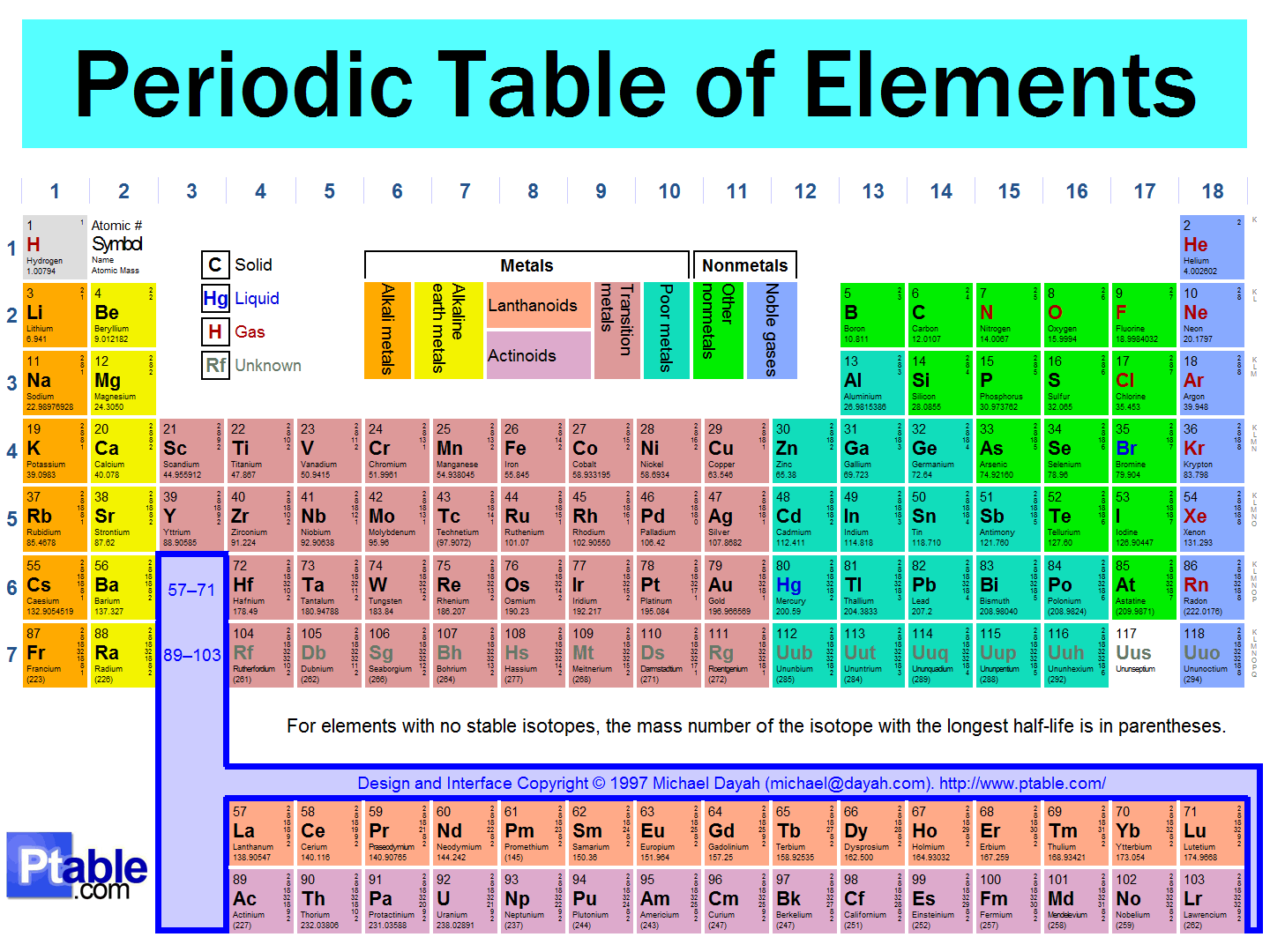How is the energy level of an atom's valence electrons related to its period in the periodic table?
1 Answer
There is no strict relationship, but for NON-transition metals (i.e. non-d-block, non-f-block), there is one.
Valence electrons are then USUALLY listed after the noble gas core, within reason (e.g. tungsten,

For NON-transition metals, the energy level
Two examples:
#"Ca"# , with configuration#[Ar]color(blue)(4s^2)# . This has#bb2# valence electrons.
#"P"# , with configuration#[Ne]color(blue)(3s^2 3p^3)# . This has#bb5# valence electrons.
EXCEPTIONS BELOW!
Transition metals on the other hand have easy access to occupied
Three examples:
#"Sc"# (scandium), with configuration#[Ar] color(blue)(3d^1 4s^2)# . This is why#"Sc"# can have a maximum oxidation state of#+3# (e.g. in#"ScCl"_3# ); it has#bb3# valence electrons.
#"W"# (tungsten), with configuration#[Xe]color(red)(4f^14) color(blue)(5d^4 6s^2)# --- note that the#4f# electrons are hardly used, even though they are listed after "#[Xe]# ", the noble gas core.
#"W"# is commonly going to have a#+6# maximum oxidation state (e.g. in#"WO"_3# ), which means it probably has#bb6# valence electrons most of the time.
#"Os"# (osmium), with configuration#[Xe]color(red)(4f^14) color(blue)(5d^6 6s^2)# . It has up to#bb8# valence electrons, e.g. in#"OsO"_4# .
Some heavy
Three examples:
#"Pa"# (protactinium), with configuration#[Rn]color(blue)(5f^2 6d^1 7s^2)# . This is why#"Pa"# usually has a#+5# oxidation state in its compounds (such as#"Pa"_2"O"_5# ); it has#bb5# valence electrons.
#"Bk"# (berkelium), with configuration#[Rn]color(red)(5f^9) color(blue)(7s^2)# --- note that#11# valence electrons would be insane. In berkelium, only some of the#5f# electrons are considered valence, depending on context.
Since#+4# is the highest known easily-accessible oxidation state (e.g. in#"BkO"_2# ),#"Bk"# has around#bb4# valence electrons (not#2# !).
#"Gd"# (gadolinium), with configuration# [Xe] color(red)(4f^7) color(blue)(5d^1 6s^2)# . It most reasonably has#bb3# valence electrons, and indeed, its highest oxidation state is usually#+3# (such as in#"Gd"_2"O"_3# ).

